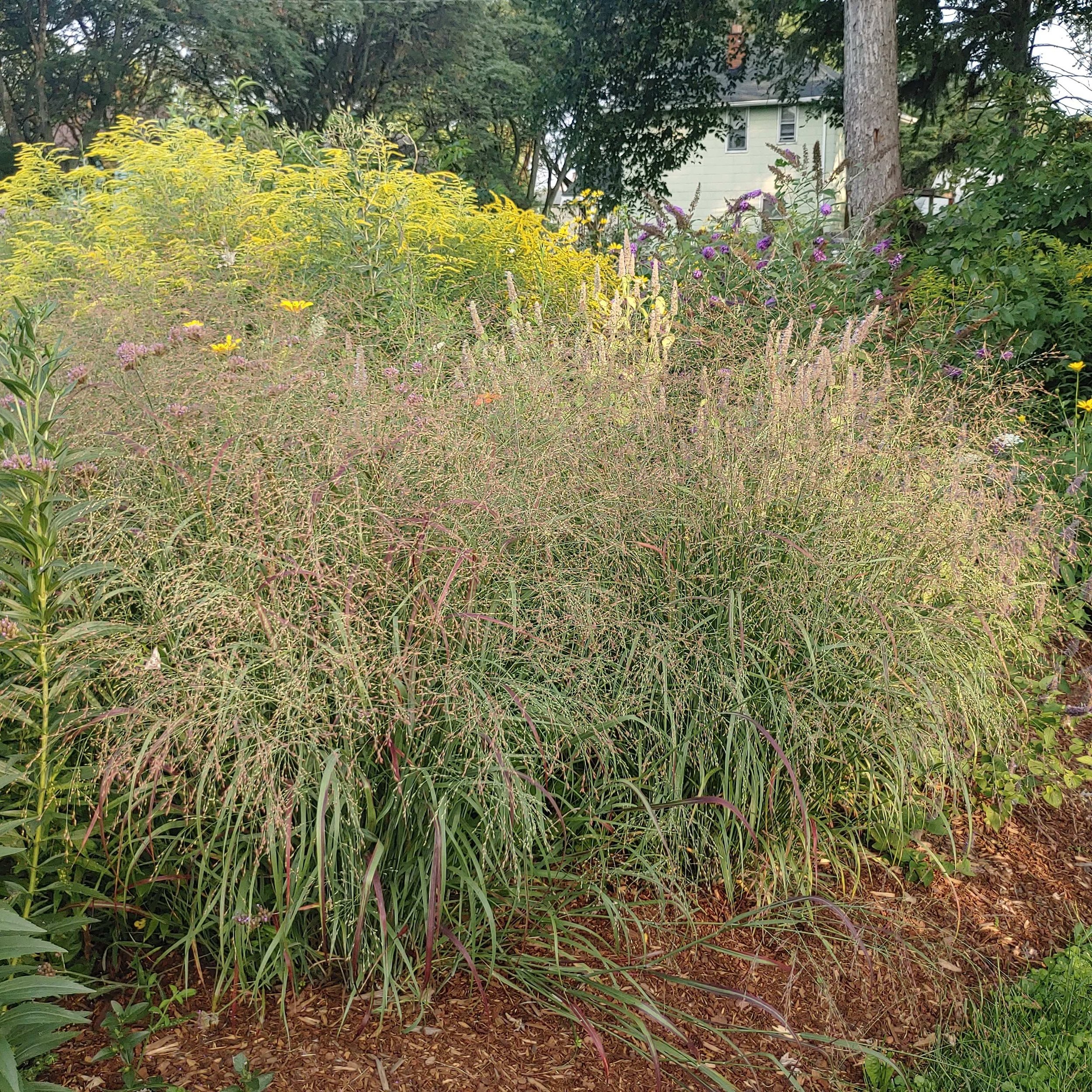Panicum virgatum, Switch Grass, Quart pot
Panicum virgatum, Switch Grass
FS, Zone 4, 3’ x 1.5’, medium to dry, blooms, poor to fertile soils, July - September.
Switchgrass was once one of the dominant species in the tallgrass prairie, but also grows along roadsides where moisture is present. It’s a hardy, deep-rooted, perennial rhizomatous grass that begins growth in late spring. Once established, a switchgrass stand can survive for ten years or longer. It can grow up to 8’ high, but is typically shorter than big bluestem grass or Indian grass. The rich, yellow-colored clumps last throughout the winter. This switch grass, with its attractive vase shape, is good for larger containers. The foliage starts out a blue green and by the end of the summer the entire plant is drenched in a reddish hue. Switch grass gets its common name from the swishing sound the grass makes. The clumps are sturdy and stand up under most winter conditions.
Provides seed and nesting material for birds. Left intact at season’s end, it will add winter interest to your wildlife garden while providing shelter for insects. Host plant for Skippers incjding the Delaware Skipper Butterfly.
Panicum virgatum, Switch Grass
FS, Zone 4, 3’ x 1.5’, medium to dry, blooms, poor to fertile soils, July - September.
Switchgrass was once one of the dominant species in the tallgrass prairie, but also grows along roadsides where moisture is present. It’s a hardy, deep-rooted, perennial rhizomatous grass that begins growth in late spring. Once established, a switchgrass stand can survive for ten years or longer. It can grow up to 8’ high, but is typically shorter than big bluestem grass or Indian grass. The rich, yellow-colored clumps last throughout the winter. This switch grass, with its attractive vase shape, is good for larger containers. The foliage starts out a blue green and by the end of the summer the entire plant is drenched in a reddish hue. Switch grass gets its common name from the swishing sound the grass makes. The clumps are sturdy and stand up under most winter conditions.
Provides seed and nesting material for birds. Left intact at season’s end, it will add winter interest to your wildlife garden while providing shelter for insects. Host plant for Skippers incjding the Delaware Skipper Butterfly.
Panicum virgatum, Switch Grass
FS, Zone 4, 3’ x 1.5’, medium to dry, blooms, poor to fertile soils, July - September.
Switchgrass was once one of the dominant species in the tallgrass prairie, but also grows along roadsides where moisture is present. It’s a hardy, deep-rooted, perennial rhizomatous grass that begins growth in late spring. Once established, a switchgrass stand can survive for ten years or longer. It can grow up to 8’ high, but is typically shorter than big bluestem grass or Indian grass. The rich, yellow-colored clumps last throughout the winter. This switch grass, with its attractive vase shape, is good for larger containers. The foliage starts out a blue green and by the end of the summer the entire plant is drenched in a reddish hue. Switch grass gets its common name from the swishing sound the grass makes. The clumps are sturdy and stand up under most winter conditions.
Provides seed and nesting material for birds. Left intact at season’s end, it will add winter interest to your wildlife garden while providing shelter for insects. Host plant for Skippers incjding the Delaware Skipper Butterfly.




